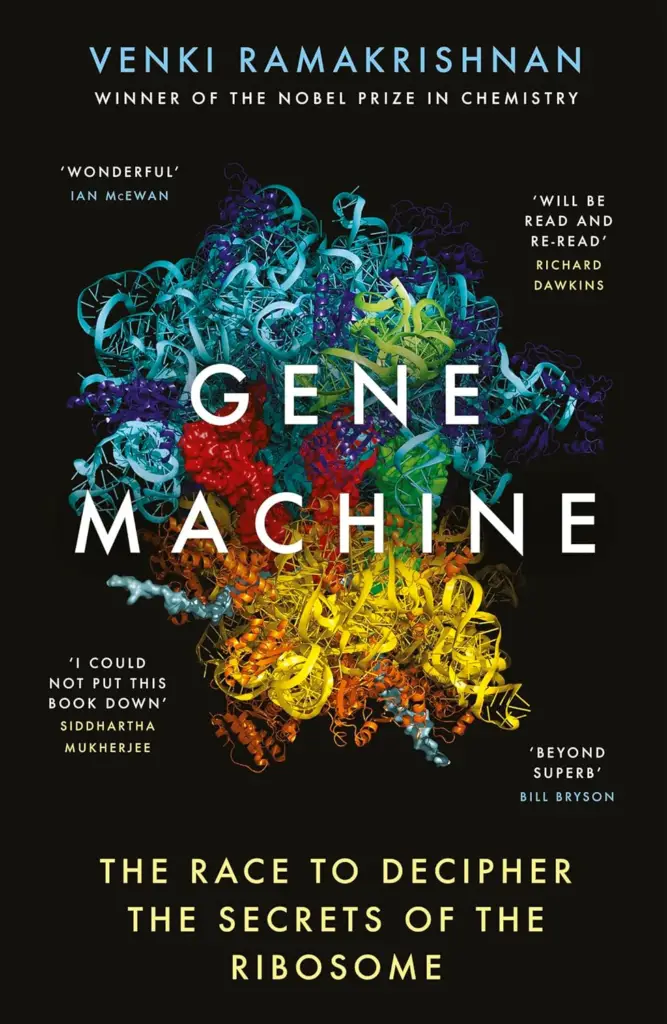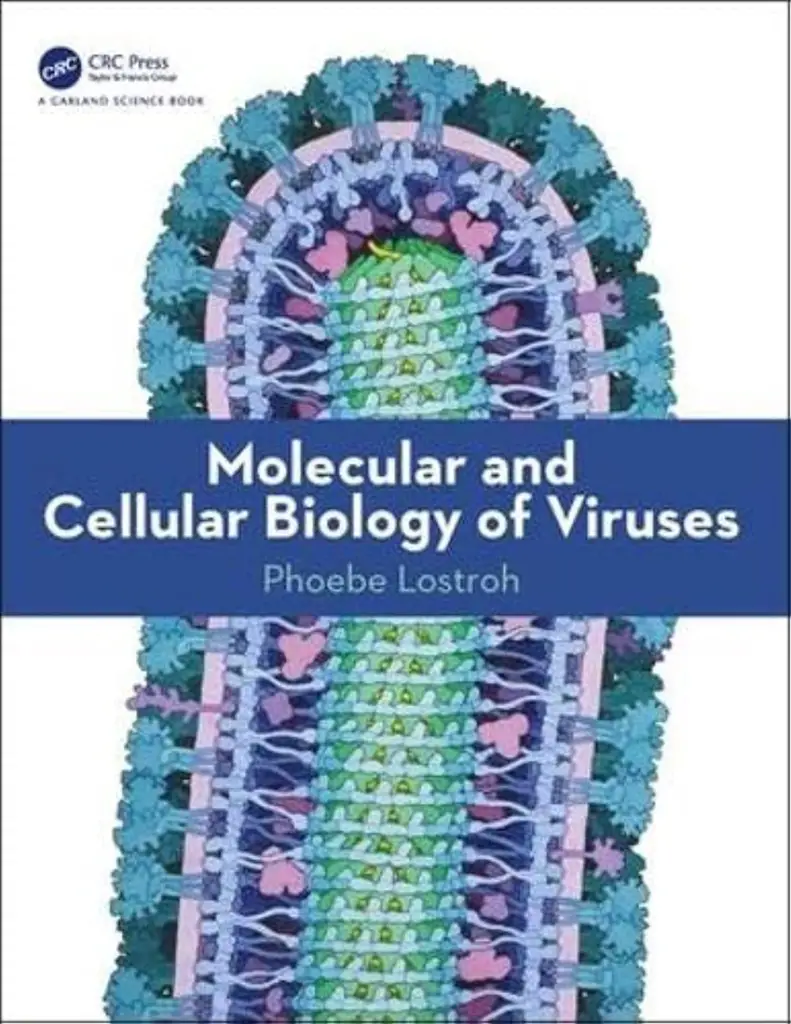In this article, I will share a list of Top and Best Molecular Biology Books. In this paper on microbiology, you will study about Structures of DNA and RNA / Genetic Material, Replication of DNA (Prokaryotes and Eukaryotes), Transcription in Prokaryotes and Eukaryotes, Post-Transcriptional Processing, Translation (Prokaryotes and Eukaryotes), Regulation of gene Expression in Prokaryotes and Eukaryotes, etc.
Our goal: Find the Best Books for Molecular Biology, based on expert recommendations and thorough research—not just one random opinion.
Here’s what we did:
- Consulted experts in the field to get their top picks.
- Searched for “Best Books For Chordates” and studied the top 5+ pages.
- Included only the books that were recommended by multiple sources.
- Carefully curated and ranked the results for you here! 😊 (It took some time, but that’s what we’re here for, right?) (Updated 2024)
As an Amazon Associate, we earn money from purchases made through links in this page.
Here is the list of Top books on Molecular Biology;
1. Molecular Biology of the Gene

Author: Watson James D., Baker Tania A., Bell Stephen P., Gann Alexander, Levine Michael, Losick Richard
This is the eBook of the printed book and may not include any media, website access codes, or print supplements that may come packaged with the bound book.
Now completely up-to-date with the latest research advances, the Seventh Edition of James D. Watson’s classic book, Molecular Biology of the Gene retains the distinctive character of earlier editions that has made it the most widely used book in molecular biology. Twenty-two concise chapters, co-authored by six highly distinguished biologists, provide current, authoritative coverage of an exciting, fast-changing discipline.
2. The World of the Cell

Author: Wayne M. Becker, Lewis J. Kleinsmith, Jeff Hardin, Gregory Paul Bertoni
Continuing the tradition of its widely-praised previous editions, The World of the Cell, 7/e, covers some of the most difficult concepts for readers– bioinformatics, bioenergetics, metabolism, enzyme kinetics, thermodynamics, membrane transport, cell signaling, regulatory mechanisms, transcription and translation, signal transduction, and DNA replication and recombination–at the right level of depth and clarity.
KEY TOPICS:
A Preview of the Cell, The Chemistry of the Cell, The Macromolecules of the Cell, Cells and Organelles, Bioenergetics: The Flow of Energy in the Cell, Enzymes: The Catalysts of Life, Membranes: Their Structure, Function, and Chemistry, Transport Across Membranes: Overcoming the Permeability Barrier, Chemotrophic Energy Metabolism: Glycolysis and Fermentation, Chemotrophic Energy Metabolism: Aerobic Respiration, Phototrophic Energy Metabolism: Photosynthesis, The Endomembrane System and Peroxisomes, Signal Transduction Mechanisms: I. Electrical and Synaptic Signaling in Neurons, Signal Transduction Mechanisms: II. Messengers and Receptors, Cytoskeletal Systems, Cellular Movement: Motility and Contractility, Beyond the Cell: Cell Adhesion, Cell Junctions, and Extracellular Structures, The Structural Basis of Cellular Information: DNA, Chromosomes, and the Nucleus, The Cell Cycle, DNA Replication, and Mitosis, Sexual Reproduction, Meiosis, and Genetic Recombination, Gene Expression: I. The Genetic Code and Transcription, Gene Expression: II. Protein Synthesis and Sorting, The Regulation of Gene Expression, Cancer Cells, Principles and Techniques of Microscopy.
3. Cell And Molecular Biology

Author: De Robertis E.D.P.
This book offers an interesting viewpoint about cell biology. I believe that this textbook is principally for those who are looking for different treatment of the most basic issues in molecular biology. I mean, different from the common viewpoint that the english-speaking authors commonly offer and, of course, always maintaining accuracy in all topics. Easy to read and very clear in the explanations. It’s written by two argentinian authors ( father and son ) and its first edition was in 1940. The last edition in spanish was in 1995 and is totally up-to-date. There were at least ten languages, including english.
4. Karp’s Cell and Molecular Biology

Author: Gerald Karp, Janet Iwasa, Wallace Marshall
Designed for courses in Cell Biology offered at the Sophomore/Junior level, Karp’s Cell and Molecular Biology: Concepts and Experiments, Binder Ready Version, 8th Edition continues to be the best book in the market at connecting key concepts to the experiments that reveal how we know what we know in the world of Cell Biology. This classic text explores core concepts in considerable depth, often adding experimental detail. It is written in an inviting style and at mid-length, to assist students in managing the plethora of details encountered in the Cell Biology course. In this edition, two new co-authors take the helm and help to expand upon the hallmark strengths of the book, update and integrate text and media in a useful way, improving the student learning experience.
5. Lewin’s Essential Genes

Author: Jocelyn E. Krebs
The new edition of Lewin’s Essential GENES is the most accessible, student-friendly text of its kind! Completely revised and rewritten, the Second Edition continues to provide students with the latest findings in the field of molecular biology and molecular genetics. An exceptional new pedagogy enhances student learning and helps readers understand and retain key material like never before.
New Concept and Reasoning Checks at the end of each chapter section, End of Chapter Questions and Further Readings for each chapter, and several categories of special topics boxes within each chapter expand and reinforce important concepts. The reorganization of topics in this edition allows students to focus more sharply on the key material at hand and improves the natural flow of course material. New end-of-chapter questions reviews major points in the chapter and allow students to test themselves on important course material.
6. Principles of Genetics

Author: Gardner, Simmons, Snustad
This text offers clear, comprehensive and unique coverage of genetics, with an emphasis on applications, written primarily for students. It provides up-to-date coverage of the most recent techniques used in modern genetics such as gene cloning and Southern, Western and Northern blot analyses of genes and gene products.
Rather than simply treating the somewhat esoteric principles of genetics in abstraction, Gardner’s text stands apart from most other introductory texts in that it stresses actual and potential future applications of the principles discussed, particularly in agriculture and medicine. Among the specific topics covered are cell mechanics; properties and replication; chromosome mapping; gene expression; mutation; gene cloning; genetic controls of immune response and cell division; genetic engineering and more.
7. Gene Machine

Author: Venki Ramakrishnan
Everyone knows about DNA. It is the essence of our being, influencing who we are and what we pass on to our children. But the information in DNA can’t be used without a machine to decode it. The ribosome is that machine. Older than DNA itself, it is the mother of all molecules. Virtually every molecule made in every cell was either made by the ribosome or by proteins that were themselves made by the ribosome.
Venki Ramakrishnan tells the story of the race to uncover the ribosome’s enormously complex structure, a fundamental breakthrough that resolves an ancient mystery of life itself and could lead to the development of better antibiotics. A fascinating insider account, Gene Machine charts Ramakrishnan’s unlikely journey from his first fumbling experiments in a biology lab to being at the centre of a fierce competition at the cutting edge of modern science.
8. The Biology of Cancer

Author: Robert A. Weinberg
Thoroughly updated and incorporating the most important advances in the fast-growing field of cancer biology, The Biology of Cancer, Second Edition, maintains all of its hallmark features admired by students, instructors, researchers, and clinicians around the world. The Biology of Cancer is a textbook for students studying the molecular and cellular bases of cancer at the undergraduate, graduate, and medical school levels. The principles of cancer biology are presented in an organized, cogent, and in-depth manner.
The clarity of writing, supported by an extensive full-color art program and numerous pedagogical features, makes the book accessible and engaging. The information unfolds through the presentation of key experiments that give readers a sense of discovery and provide insights into the conceptual foundation underlying modern cancer biology.
The new Second Edition has been comprehensively revised and updated to include major advances in cancer biology over the past six years.Updates include current information on: * The tumor microenvironment * Metastatic dissemination * Tumor immunology * Cancer stem cells * The epithelial-mesenchymal transition * Multi-step tumorigenesis * Invasion and metastasis * Mutation of cancer cell genomes * Greatly expanded treatment of traditional therapy * Epigenetic contributions * MicroRNA involvement * The Warburg effect Besides its value as a textbook, The Biology of Cancer is a useful reference for individuals working in biomedical laboratories and for clinical professionals. Every copy of the book comes with an updated “Pathways in Human Cancer” poster and a DVD-ROM containing the book’s art program, a greatly expanded selection of movies, audio file mini-lectures, Supplementary Sidebars, and a Media Guide.
9. Essential Cell Biology

Author: Bruce Alberts, Karen Hopkin, Alexander D. Johnson, David Morgan, Martin Raff, Keith Roberts, Peter Walter
This text features lively, clear writing and exceptional illustrations, making it the ideal textbook for a first course in both cell and molecular biology. Thoroughly revised and updated, the Fifth Edition maintains its focus on the latest cell biology research. For the first time ever, Essential Cell Biology will come with access to Smartwork5, Norton’s innovative online homework platform, creating a more complete learning experience.
10. Stern’s Introductory Plant Biology

Author: James Bidlack, Shelley Jansky, Kingsley Stern
This introductory text assumes little prior scientific knowledge on the part of the student. It includes sufficient information for some shorter introductory botany courses open to both majors and nonmajors, and is arranged so that certain sections can be omitted without disrupting the overall continuity of the course.
Stern emphasizes current interests while presenting basic botanical principles. This latest edition incorporates measurable learning outcomes and updated readings. Students will be introduced to the new classification of plants and plant-related species, integration of biotechnology into several chapters and inclusion of new text boxes addressing the areas of ecology, evolution and molecular biology. New photos have replaced older pictures or have been added also.
11. Molecular Biology of the Cell

Author: Bruce Alberts, Alexander D. Johnson, Julian Lewis, David Morgan, Martin Raff , Keith Roberts, Peter Walter
As the amount of information in biology expands dramatically, it becomes increasingly important for textbooks to distill this vast amount of scientific knowledge into concise principles and enduring concepts. Molecular Biology of the Cell, Sixth Edition accomplishes this goal with clear writing and beautiful illustrations. The Sixth Edition has been extensively revised and updated with the latest research in cell biology, and it provides an exceptional framework for teaching and learning.
12. Molecular and Cellular Biology of Viruses

Author: Phoebe Lostroh
viruses interact with host cells in ways that uniquely reveal a great deal about general aspects of molecular and cellular structure and function. Molecular and Cellular Biology of Viruses leads students on an exploration of viruses by supporting engaging and interactive learning. All the major classes of viruses are covered, with separate chapters for their replication and expression strategies, and chapters for mechanisms such as attachment that are independent of the virus genome type.
Specific cases drawn from primary literature foster student engagement. End-of-chapter questions focus on analysis and interpretation with answers being given at the back of the book. Examples come from the most-studied and medically important viruses such as HIV, influenza, and poliovirus. Plant viruses and bacteriophages are also included. There are chapters on the overall effect of viral infection on the host cell.
Coverage of the immune system is focused on the interplay between host defenses and viruses, with a separate chapter on medical applications such as anti-viral drugs and vaccine development. The final chapter is on virus diversity and evolution, incorporating contemporary insights from metagenomic research.
Key selling feature:
- Readable but rigorous coverage of the molecular and cellular biology of viruses
- Molecular mechanisms of all major groups, including plant viruses and bacteriophages, illustrated by example
- Host-pathogen interactions at the cellular and molecular level emphasized throughout
- Medical implications and consequences included
- Quality illustrations available to instructors
- Extensive questions and answers for each chapter
13. The Cell: A Molecular Approach

Author: Geoffrey Cooper
Even the most experienced instructor can find teaching cell biology daunting, and most cell biology texts are bogged down in detail or background information. Lost in all the details are the more fascinating material and contemporary advances that represent this rapidly moving field. With so much to cover, creating a classroom around active learning may be difficult or nearly impossible.
The Cell: A Molecular Approach, Eighth Edition, endeavors to address those issues with succinct writing, incorporation of current research, a test bank that encourages critical thinking, and an active learning framework. With just enough detail for a one-semester, sophomore/junior level course, the text presents fundamental concepts and current research, including chapters on Genomics and Transcriptional Regulation and Epigenetics, and new in-text boxed features on Molecular Medicine and Key Experiments. Instructors will appreciate updates to the eighth edition test bank, such as raising the Bloom’s level of questions overall, and giving instructors the ability to select questions based on level.
Finally, for instructors who want to flip their classrooms or just get students more engaged, The Cell, Eighth Edition, is the only cell biology text that is accompanied by an Active Learning Guide. This chapter-by-chapter playbook shows instructors how to create a dynamic learning environment with in-class exercises, clicker questions, and links to relevant media, animations, testing, and self-quizzing, all aligned with the new in-text learning objectives, wherever appropriate. This text provides the right level of detail, student engagement, and instructor support for the modern cell biology classroom.
14. Human Molecular Genetics

Author: Tom Strachan, Andrew Read
Human Molecular Genetics has been carefully crafted over successive editions to provide an authoritative introduction to the molecular aspects of human genetics, genomics and cell biology.
Maintaining the features that have made previous editions so popular, this fifth edition has been completely updated in line with the latest developments in the field. Older technologies such as cloning and hybridization have been merged and summarized, coverage of newer DNA sequencing technologies has been expanded, and powerful new gene editing and single-cell genomics technologies have been added. The coverage of GWAS, functional genomics, stem cells, and disease modeling has been expanded. Greater focus is given to inheritance and variation in the context of populations and on the role of epigenetics in gene regulation.
Key features:
- Fully integrated approach to the molecular aspects of human genetics, genomics, and cell biology
- Accessible text is supported and enhanced throughout by superb artwork illustrating the key concepts and mechanisms
- Summary boxes at the end of each chapter provide clear learning points
- Annotated further reading helps readers navigate the wealth of additional information in this complex subject and provides direction for further study
- Reorganized into five sections for improved access to related topics
- Also new to this edition – brand new chapter on evolution and anthropology from the authors of the highly acclaimed Human Evolutionary Genetics
A proven and popular textbook for upper-level undergraduates and graduate students, the new edition of Human Molecular Genetics remains the ‘go-to’ book for those studying human molecular genetics or genomics courses around the world.
15. Molecular & Cell Biology For Dummies

Author: Rene Fester Kratz
3.8 billion years old and counting, there’s more than a little to know about the fundamentals of how life works. This friendly guide takes you from the primordial soup to the present, explaining how specialized cells have given rise to everything living, from the humblest amoeba to walking, talking human beings. Whether you’re enrolled in a cell or molecular biology course and need a straightforward overview, or are just curious about the latest advances, this fully updated edition is your all-access ticket to our inner world.
Molecular & Cell Biology For Dummies decodes jargon and theories that can tax even the most devoted student. It covers everything from basic principles to how new technology, genetic testing, and microarray techniques are opening up new possibilities for research and careers. It also includes invaluable tips on how to prepare for—and ace—your exams!
- Explore the structure and function of the cells—and find out why cellular context is crucial to the study of disease
- Discover how molecular biology can solve world problems
- Understand how DNA determines traits and is regulated by cells
- Enhance your knowledge and results with online resources and study tips
From microscopic details to macro concepts, this book has something for you.
- Text Highlighting: Select any text in the post content to highlight it
- Text Annotation: Select text and add comments with annotations
- Comment Management: Edit or delete your own comments
- Highlight Management: Remove your own highlights
How to use: Simply select any text in the post content above, and you'll see annotation options. Login here or create an account to get started.